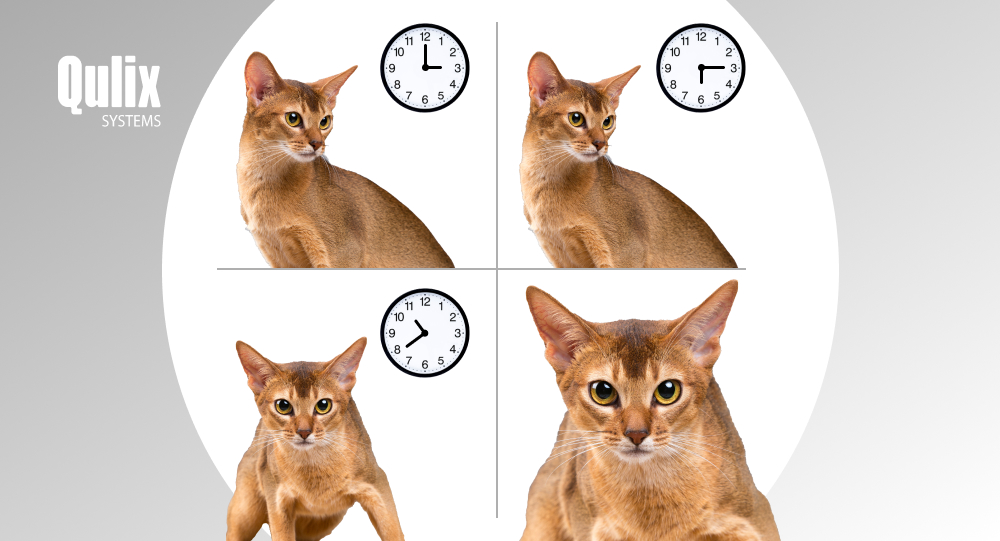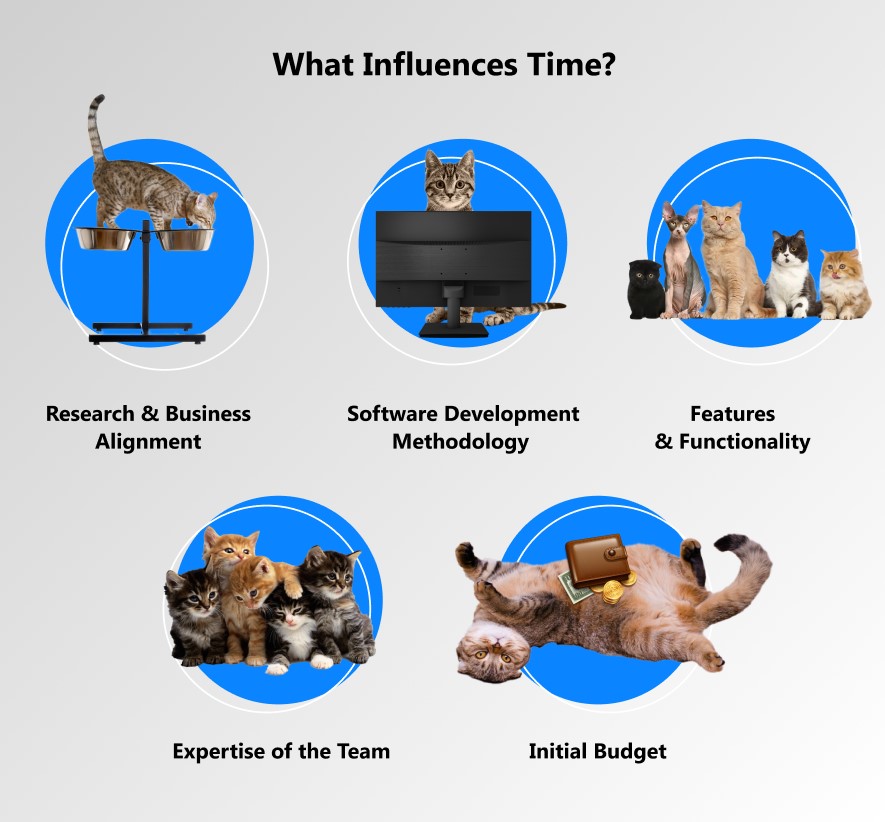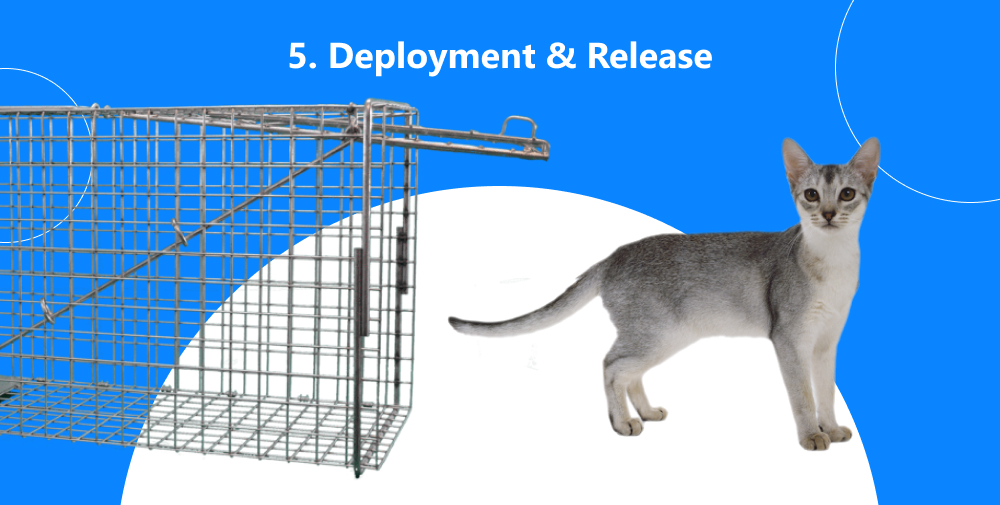In the time of digitalization, the number of people using their iOS and Android devices to look for products and services online is rapidly growing. Mobile apps providing quicker and more efficient access to these have become a requirement almost for any kind of business, no matter the industry. Meanwhile, launching the product at the right time, before potential competitors do that and when potential customers need it most, can define how successful that mobile app will become. Hence, the question arises, how long does it take to develop an app? Here is a tip: there is no right answer to this question.
written by:
Aliaksandra Tsikhanovich
In the time of digitalization, the number of people using their iOS and Android devices to look for products and services online is rapidly growing. Mobile apps providing quicker and more efficient access to these have become a requirement almost for any kind of business, no matter the industry. Meanwhile, launching the product at the right time, before potential competitors do that and when potential customers need it most, can define how successful that mobile app will become. Hence, the question arises, how long does it take to develop an app? Here is a tip: there is no right answer to this question.
The question of how much time it takes to build an app can be quite tricky. If we look at the industry giants such as Facebook, Uber, Airbnb, and others, they are all still in their development stage after over 10-15 years since entering the market. As trends and needs change, the app development process continues to keep the app up-to-date, introduce better features and optimize the user experience. In other words, the never-ending improvement process lets businesses stay competitive. Furthermore, each project is different and various factors influence its duration — complexity, UI/UX design, purpose, skills of the hired team, etc.
However, it is possible to make an approximate estimation of time needed for the key development stages of an application good enough to be released to the market and start earning money, validate the idea and, later, invest in further improvements. Moreover, certain tricks can help to reduce the timeframe, while not compromising the quality.
Factors Affecting App Development Timeline
As mentioned earlier, several factors may influence the time spent on the app development process. Below are just a couple of them.
Research & Business Alignment
Both the quality of the research and how well the concept is defined can significantly influence the timeline of new app development. It is important to dedicate time to conducting a profound examination of the state of the target market, as well as to establish a clear idea of the app itself to avoid coming back to this stage later on in the development process and creating unrealistic timeline expectations. Moreover, it is critical to make sure all teams are aligned on the product strategy.
Software Development Methodology
The development methodology chosen for the project defines the process flow and the rules of communication between teams, which highly affects how quickly the work is done. Moreover, how well the methodology is implemented, either it is Agile, DevOps, Waterfall, or any other, is not any less important, therefore, a project manager with strong software management skills is crucial for a viable product.
Features & Functionality
The complexity of the app is one of the most defining points when it comes to the cost and time needed to build it. The more advanced and trendy features to be included, the more time it will take to build, design, and test the product.
Expertise of the Team
Either it is a project manager or software engineer, how experienced and skilled the specialists working on the project are makes a big difference, especially when it comes to more specialized and complicated apps. It is often worth taking into consideration the possibility of outsourcing software development to an app development company.
Initial Budget
Available budget can affect the timeline as well, help to set up the development plan depending on what can be afforded, and prioritize and limit the number of features that should be included. It is always crucial to always bear in mind that extra hours of works cost extra money.
Application Development Stages
A clear vision and understanding of the core stages of app development is the first step on the way to a more efficient and successful process. It helps to establish realistic timeframes, as well as to avoid future drawbacks, due to missing out on an important phase.
Planning & Strategy
This stage of app development often doesn’t receive quite enough attention, even though the strategy is what guides the rest of the process step-by-step, setting the project in the right direction. Firstly, it is important to conduct market analysis and potential users’ needs assessment to verify that the business idea is indeed viable and in demand, have a look at the competition, and understand how to make the potential product stand out.
This is also the stage of development where budget gets established, which, as earlier mentioned, may influence the scope of the app’s functionality as well. Then, the structure gets set up, the decisions on the type of application and other technical aspects are made depending on the needs of potential customers. It is important to get aligned on business goals and clear requirements to avoid future drawbacks.
All in all, this stage can take from a couple of weeks to a couple of months, depending on the complexity of the project.
UI/UX Design
During this stage, UI/UX designers work on the visualization of the future application following the presented requirements. Each screen, each interaction, and general appearance get created and then put to test before the application starts to be built. There are four main steps that the design process can be divided into:
Step 1: Visualization of the app idea through building wireframes — preliminary sketches of what the application will look like, how many screens there will be, what each of them will contain and how these screens will be interconnected between each other, etc. The wireframes need to be then approved by the business stakeholders or clients (in case of outsourcing), as well as by the development team to make sure that it is possible to build the design.
Step 2: Now mockups and prototypes get built — the initial version of a product that is going to be later developed by the software team. Prototypes demonstrate each screen, each button, and animation, each interaction a future user is going to have with the app, etc. Designers always work in collaboration with the development team.
Step3: At this point, the created prototypes are being tested by prospective users. It helps to validate whether the design is intuitive enough and meets the user’s expectations and needs. It might also reveal that some of the features are not necessary while pointing out some others that were missed out. At this stage, making changes is still easy and relatively cheap, allowing to experiment with the concept and functionalities without requiring many resources.
Step 4: After the design has been tested, the last step is to fix discovered defects, perfect the appearance, and send the final version out to the software development team.
The entire process can take up to several months, based on the design complexity, the number of screens, the clarity of the instructions, and the number of changes and re-testing that need to be accomplished before everything looks flawless.
Development
Once designers are done with their part, comes the most time-consuming yet major stage of the app creation — the development of the application by software developers and engineers, using prototypes and assistance provided by the design team. The process consists of two interdependent components:
Back-End Development: It refers to the server-side architecture of the app being built, including data integration and storage, user management, push notifications, etc.
Front-End Development: Front-end engineers manage the user interface of the application, turning the earlier-created prototypes into actual app pages. They also take care of the caching and synchronization processes, as well as front-end data processing.
Again, the average time to build an app varies depending on the project, its complexity, the team working on it, and the amount of mid-project changes. Usually, it takes at least several months and up to one year.
Testing
Error-free coding is a cornerstone of any application’s success, which is why continuous testing is an integral part of any development process. The testing is done manually as well as automatically and is started while app development is still ongoing. When there are any defects detected during testing, the changes need to be implemented and re-tested again, until the application is error-free.
Numerous types of testing can be done depending on the kind of app and its functionalities. Furthermore, how long testing lasts, once more, depends on the complexity of the product, the number of bugs detected and the number of changes made. Once app development is finished, it usually takes at least several more weeks to accomplish User Acceptance Testing (UAT) performed by end-users before product release.
Deployment & Release
Now it is time to release the finished product to the public, however, it is not as simple as it may seem. App stores such as Apple App Store and Google Play have certain guidelines and processes in place to ensure the quality of the uploaded content. Once the app is uploaded, it goes into review, which may extend the launch time, depending on how long it takes. According to Apple, over 90% of applications get reviewed in 48 hours, however, in the case of incompletions, it may take longer. Meanwhile, Google extended its average app review time to 7 days, or even longer in some cases.
Maintenance
As we mentioned earlier, app development is a never-ending process and this is the stage, which proves the point. At first, after the app has been released, it is feedback time — customer reviews, bugs that hadn’t been detected during testing, security patches, etc. However, even after all this gets fixed, it is still not the end…
The world keeps moving, the trends keep changing, the competition keeps growing and the application needs to be improved continuously as long as it exists to meet new requirements and keep up with the rivals. In 2019, the mobile app abandonment rate reached 25%, which is a rather high number for the software industry. Hence, it takes effort and continuous work to keep high user retention rates.
In Closing
To summarize, how long it takes to make an app is a very complex question. While for some simplistic applications it may take slightly over 6 months, usually the project lasts at least a year, often — even longer. Moreover, it is important to keep in mind that once the application is built, it still requires constant improvements and updates. It always depends on its complexity, expertise of the team, clearly aligned strategy, and numerous other factors. As each project is unique, defining the exact timeline is nearly impossible. However, knowing and understanding the development stages can help the business to optimize them and reach better performance, while also be flexible, leaving room for possible setbacks.
Meanwhile, there are also efficient ways to reduce the development timeline, such as starting with a Minimum Valuable Product (MVP) first and outsourcing work to the specialized professionals from an app development company, which you can read more about in our blog.
If you wish to know other useful tips or are looking for consulting services for your project, Qulix Systems will be happy to assist you! For more information, please contact our Support Team or visit our website.

Contacts
Feel free to get in touch with us! Use this contact form for an ASAP response.
Call us at +44 151 528 8015
E-mail us at request@qulix.com













